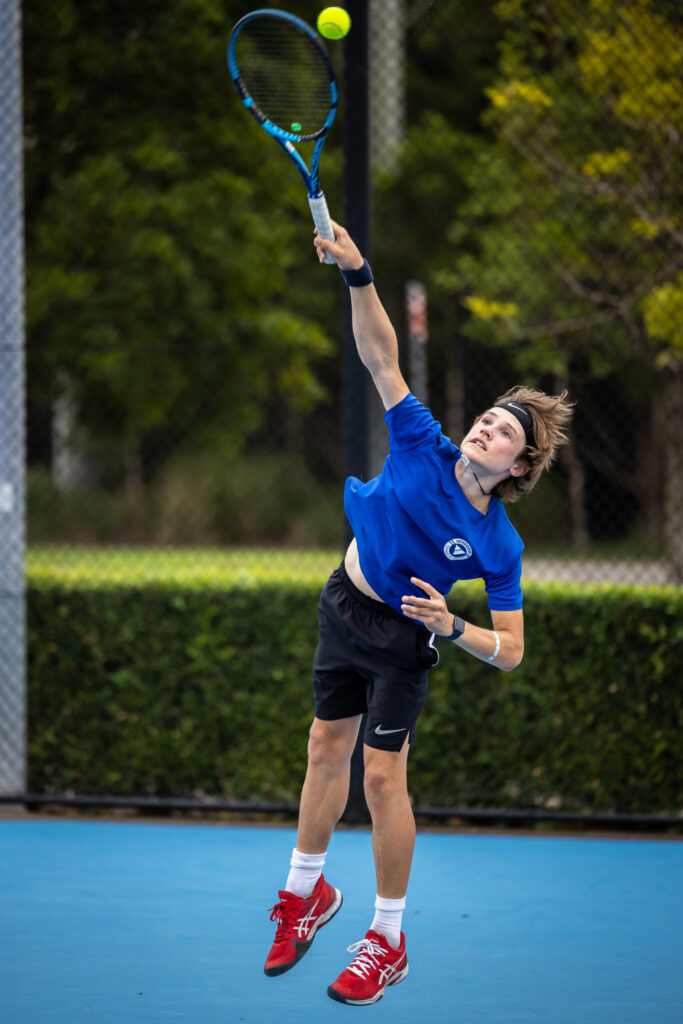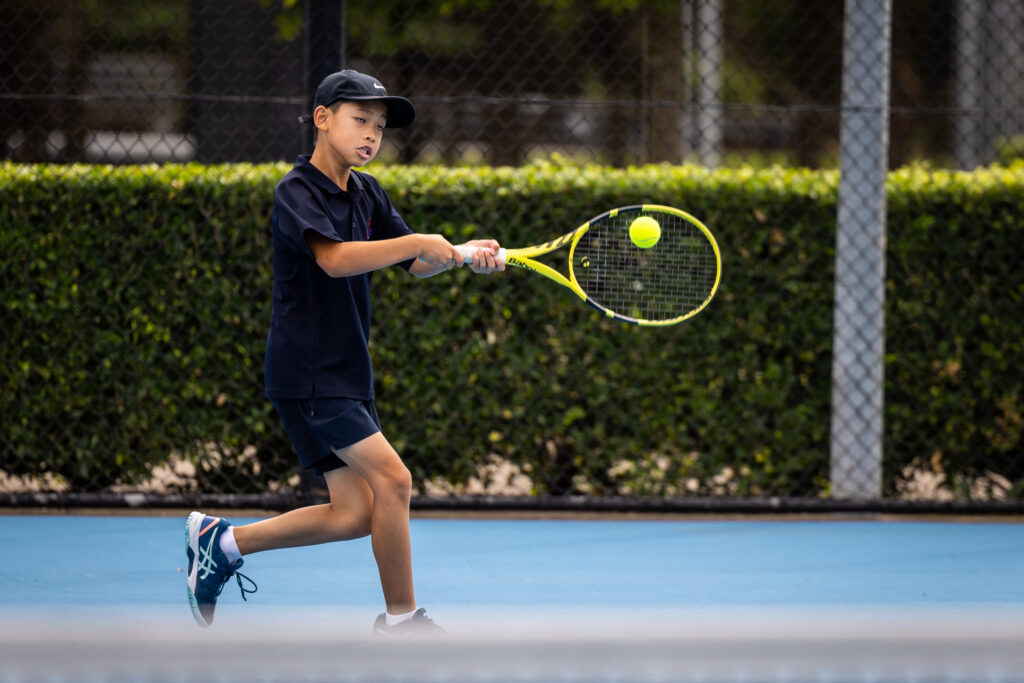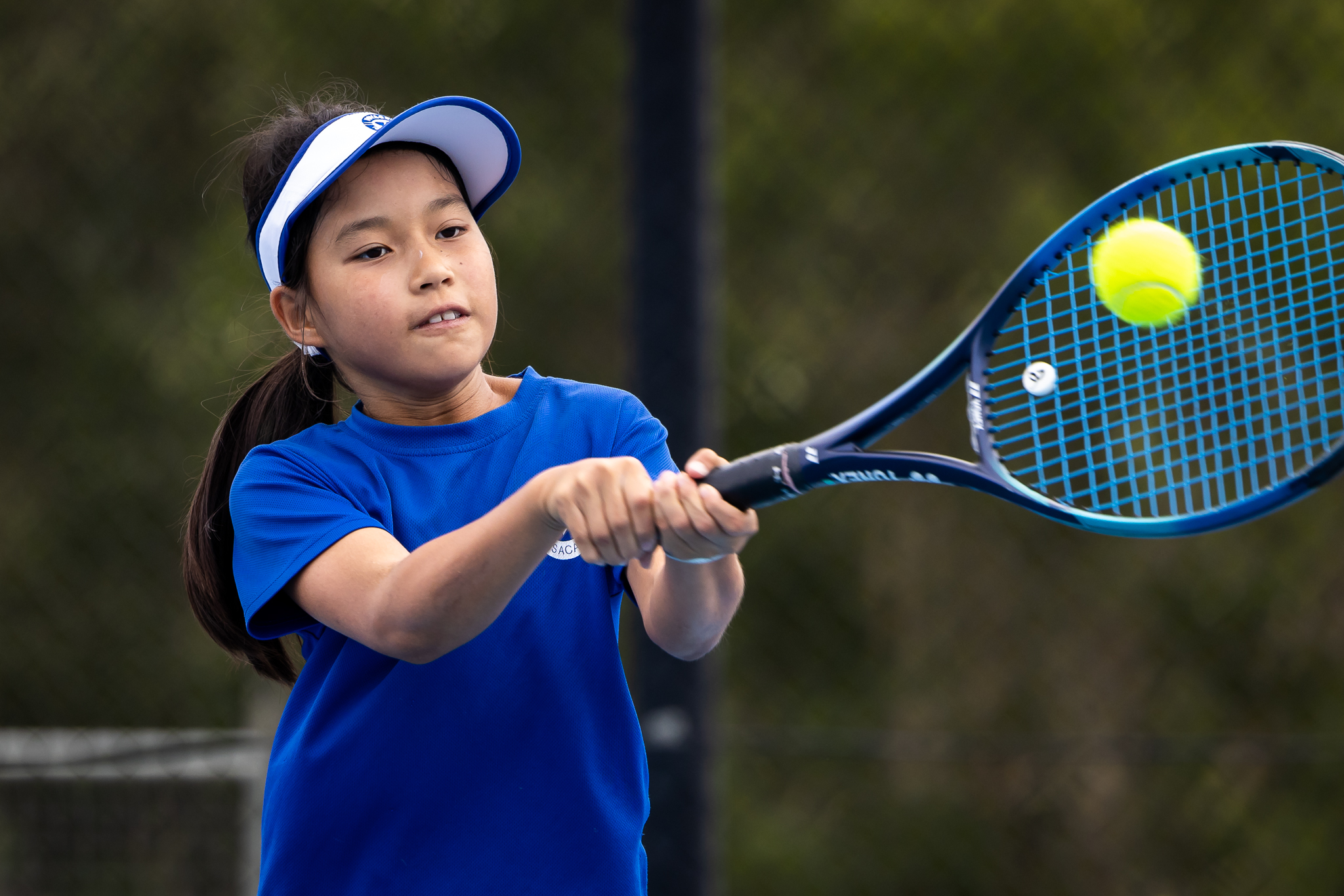
In the article Understanding Game Styles we discussed the qualities of 4 most common game styles in tennis which include:
- Aggressive baseliner
- Counter puncher
- Serve-and-volleyer
- All court player
Choosing the right game style requires an understanding of a player’s physical characteristics and the earlier a player knows their optimal game style, the more developed their game will be in the long term. Common physical characteristics and matching game styles are listed below.
Tall Players
For male tennis players, we would categorise tall as being 190 cm and above, and for female players, 180 cm and above. These players usually have significant advantages with the serve and reach at the net.
Suitable game styles. Tall athletes who are less agile and slower around the court tend to become serve-and-volleyers, while tall players who move well are best suited to becoming all-court players.
Tactical focus. In most cases, tall players devote significant amounts of time to developing a world-class serve and aggressive game style that involves getting to the net. Their main aim will be to play first-strike tennis, keep the points shorter and not give the opponents much rhythm.
Technical focus. Tall players focus on developing a near perfect service action and getting the technique spot on for this stroke. They need to schedule regular serving practice with targets a couple of times per week, and sound technical skills at the net are also essential. Their groundstroke technique should be compact and developed around power and taking the ball early.
Physical focus. Prioritise developing power characteristics over endurance, for example. Focus on staying loose, particularly through the upper body, as well as having strength in the right areas for serving and moving to the net.
Psychological focus. Tall players with big serves typically hold a high percentage of serves and break a low percentage of serves, meaning a lot of sets will be close, often coming down to the tiebreaker. They specifically need to learn how to cope with the pressure of playing big points nearly every set that they play.

Short and quick players
These players have highly developed defensive skills, foot speed and fitness and can wear their opponents down over the duration of a match.
Suitable game styles. Players in this category with high levels of fitness and less power tend to play the counterpuncher style, while those with stronger power characteristics tend to play more of an aggressive baseliner style.
Tactical focus. Develop high levels of consistency and top spin on the groundstrokes to improve margin for error, effective wide serves to open up the court and a weapon forehand.
Technical focus. These players need sound technique on the serve with the priority being top spin. Shorter players have to develop a heavy first and second serve as the flat serve will be low percentage due to the lower contact height. Groundstroke swings can be larger and facilitate more top spin and margin on the ball.
Physical focus. Speed and endurance are the biggest priorities for these players as they will win matches by slowly wearing down their opponents. High levels of fitness are a must.
Psychological focus. Short and quick players will play a lot of long matches and will need the emotional fitness to concentrate for hours at a time. They must be able to handle numerous lead swings and momentum shifts during matches due to more breaks of serve.
The power player
These players have the advantage of being able to use significant amounts of power to apply pressure and take time away time from their opponents. This can be on the serve and groundstrokes.
Suitable game styles. In most cases, power players will fall into the categories of aggressive baseliner or all-court player. Being powerful, they don’t have any advantage choosing a counterpuncher style.
Tactical focus. The power player’s long-term tactical focus should be to develop all areas of their powerful game, including a sound transition and net game. The reason for this is that these types of players usually get lots of opportunities to come forward to the net to finish off the point. They can often play first-strike tennis effectively and put their opponents under pressure from the beginning of the point.
Technical focus. Having well above average racquet speed to their advantage, power players need to develop a technique that allows them to put plenty of spin on the ball as well as being able to flatten out. Spin can be a major advantage on their serve and groundstrokes.
Physical focus. Maintaining flexibility and staying injury free are crucial for this type of player. Players who hit the ball harder are placing more forces through their bodies and need to have a good pre-habilitation programme in place on top of developing all of the fundamental physical areas.
Psychological focus. Fast, powerful players need to mentally prepare themselves for longer matches and emotional fitness. Players who don’t move as well will need to become very effective at playing first-strike tennis and mentally prepare for shorter points.

What if you don’t have any standout physical characteristics?
Players who lack height, power, footspeed can invest in other areas of the game to gain an advantage. Below are some suggestions that any player can turn into a weapon over the long term.
Develop a weapon serve. The serve is the most important shot in tennis but is often the least practised. A major priority of any player is to develop an effective service action (with the help of an expert coach) that facilitates power, spin and accuracy then get out on the practice court and develop a wide variety of serves combined with target practice a couple of times per week. Players with a weapon serve will have a huge advantage over their opponents, particular at college or professional level.
Become great at the net. Most players spend 95% of all practice and training hours on their groundstrokes, so it’s not surprising to see that many junior players are poor when it comes to net play. Developing a great net game can take years, but the pay-off is worth it. In singles, it will give a player the confidence and tactical options to move forward to the net frequently and put great amounts of pressure on opponents as soon as they drop the ball short. They’ll also become a huge asset in doubles as a sound net game is a key component to being successful in this game.
Develop an effective slice backhand. Most physically gifted players don’t give much attention to this shot, which can cause a lot of problems for opponents when it’s used effectively. A player can use the slice when they’re defending to provide them with time to recover. They can also use it to attack the net, lob, drop shot and generally disrupt the rhythm of the opponent. Developing an effective slice requires sound technique combined with high repetition of this shot over a number of years.
Work on mental toughness. Only a small percentage of players ever master the mental side of the game, so many are prone to large ups and downs in matches, emotional outbursts and a struggle to compete at their best when faced with adversity. This area of a player’s game needs to be developed regardless of their physical characteristics as it is probably the most important aspect of the game.
Become a master at reading the play. Players who are slow with their movement can actually appear quick and always in position for the ball if they anticipate and read the play well. Your child can acquire this skill through playing a high volume of matches, picking up on opponents’ habits and tendencies, understanding what parts of the court the ball is likely to hit in any given scenario in the point, and carefully observing how an opponent is setting up to hit the ball.
Become a tactician. Many great tennis athletes spend their careers developing their movement and ball striking, but often don’t realise their potential in the tactical area. With enough focus on developing a versatile game style, implementing match strategy and observing opponents’ tendencies, any player can become a great tactician, which can provide a big advantage over the long term.
Developing an appropriate game style is critical for a player to maximise their potential and have the best chance of winning more often in competition. Some actions to consider are:
- Take the time to understand the four main game styles that most players fall into
- With help from your coach, make an assessment of your physical and mental qualities
- Create a plan to make sure you are developing the most appropriate game style to increase the chances of maximising your potential
By Ryan Henry, Managing Director of Voyager Tennis and Ex-Pro Tennis Player




